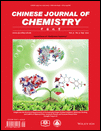Synthesis, Biological Activity Evaluation and Molecular Modeling Study on the New Isoconessimine Derivatives as Acetylcholinesterase Inhibitors
Abstract
New isoconessimine derivatives were synthesized from conessine (1) and evaluated as acetylcholinesterase (AChE) inhibitors. The derivatives were prepared via two reaction steps, N-demethylation and nucleophilic substitution. All of the synthesized derivatives exhibited more potential anti-acetylcholinesterase activities than conessine (1) (IC50=16 µmol·L−1) and isoconessimine (2) (IC50>300 µmol·L−1). Compound 7b (3β-[methyl-[2-(4-nitrophenoxy)ethyl]amino]con-5-enine) showed the most potent inhibitory activity with an IC50 of 110 nmol/L which is close to that of reference compound huperzine A (IC50=70 nmol/L). The mode of AChE inhibition by 7b was reversible and non-competitive. In addition, molecular modeling was performed to explore the binding mode of inhibitor 7b at the active site of AChE and the results showed that 7b could be docked into the acetylcholinesterase active site and compound 7b had hydrophobic interactions with Trp279 and Leu282.




